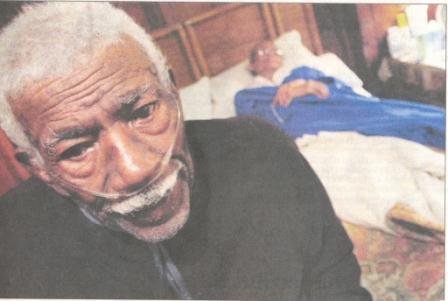In October, 2006, the Historic Preservation Review Board approved, by a 9 to 1 vote, the staff recommendation that a "basement entrance and ramp" at 3228 Walbridge Place not be allowed. I found out about this in a conversation with one of our Historic Mount Pleasant people, who mentioned that the residents wanted the ramp because they had become too old to manage stairs, and were now living in their basement.
That struck me as a wrong-headed decision: human needs ought to come first, and if elderly residents need a front entrance and ramp because they can no longer manage the stairs in front of their house, then they should be allowed to have them. Growing old is a grim business, and we owe it to our elderly residents to make their last years as comfortable as possible. As my wife said when I told her of this Historic Preservation denial, "that's terrible!"
I contacted the residents, Cornelius and Merrie Lucas, and confirmed their need for a front exit and ramp for their basement home. The need was even more dire than I had thought: confined to their basement by the disabilities of old age (he is 88, she is 86, and she's crippled by strokes), their only exit is through the back door, out to the alley. Should that be blocked -- and their kitchen, the most likely point of origin for a fire, is right next to that back door -- they would have no way out of their basement. Two exits are required for basement apartments, for safety. This basement has only one, and the front "entrance" is needed primarily as an emergency exit.
This is the Walbridge Place row, the red steps marking the location in dispute. Is this pattern of repeating porches and steps more important than the safety and comfort of elderly residents?
